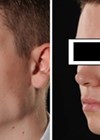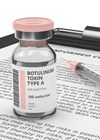Hay fever provides a significant burden on the NHS, according to NHS data, approximately 20% of UK residents are hay fever sufferers. Around one fifth of these patients with allergies struggle with the fear of a possible asthma attack [1].
However, there is limited satisfaction with current therapies for hay fever and allergic rhinitis, with many patients reporting lack of efficacy with traditional over-the-counter antihistamines. They are experiencing only short periods of allergy relief, often misusing, overdosing, or employing polypharmacy to achieve symptom control.
Compliance is also variable, with complaints of fatigue, drowsiness and dry mouth being common. Patients feel that these remedies are inconvenient, and management of their chronic inflammation is challenging and complex. Hay fever sufferers report disruption to their sleep, leading to loss of productivity in the workplace and absence at work, so there follows a wider consequence to this disorder, as well as a direct cost to the patient [2].

Intranasal administration of botulinum toxin type A for symptomatic relief in allergic rhinitis patients.
Exploring new and innovative therapeutic options to effectively reduce the symptoms of allergic and idiopathic rhinitis utilising botulinum toxin type A (BTX-A) is having significant merit; the Aller-Tox™ method is anecdotally providing up to two months of rhinitis relief in patient reports.
Historically, other therapies for rhinitis have been limited to antihistamines, corticosteroids, anticholinergic drugs or immunotherapy. Uncovering treatment alternatives that are easy to perform and well tolerated by the patient are paramount.
Background
Three distinct subgroups of rhinitis are described: allergic rhinitis (AR), infectious rhinitis, and non-allergic, non-infectious rhinitis (NAR) [3].
Rhinitis is described as a reaction that occurs, causing nasal congestion, rhinorrhoea, sneezing, postnasal drip and nasal puritis [4]. It is characterised by inflammation, with symptoms typically presenting in the nose. The presentation of symptoms in the eyes, ears and throat are common with the AR subtype.
The rhinitis phenotypes are considered dynamic and may develop into one another [5]. For the purposes of this article, AR and NAR can also be described as idiopathic rhinitis or of ‘no known cause’. Infectious rhinitis or ‘viral rhinitis’ is not proposed as an area for therapy.
It is generally agreed that NAR encompasses a range of heterogeneous conditions. In contrast, AR can be delineated as an inflammatory disorder of the nasal mucosa induced after allergen exposure by an IgE-mediated immune response [6,7]. It requires the interaction of antigen-presenting cells, T lymphocytes, and B lymphocytes, to be facilitated by exposure to environmental allergens. This sensitisation leads to the production of allergen-specific IgE antibodies, which circulate in the blood and bind to the surface of mast cells and basophils, including those in the nasal mucosa. Upon subsequent exposure to the allergen, these cells are activated, releasing the mediators responsible for acute nasal symptoms [4].
Literature review
A literature search revealed various methods of administering BTX-A for rhinitis. The clinical efficacy on secretory disorders using BTX-A is not limited to rhinitis. It also includes therapy for polarised secretory disorders, axillary and palmar hyperhidrosis, gustatory sweating (Frey's syndrome). Technical research on the use of BTX-A for the treatment of allergic rhinitis has been steadily increasing [8].
Mozafarinia and colleagues conducted a double-blind, placebo-controlled study to evaluate the safety and effectiveness of sub-mucoperichondrial abobotulinumtoxinA (aboBoNT-A) injections in the nasal septum for treating both allergic and non-allergic rhinitis (N=40). Among the participants, 20 were randomly assigned to receive 20 U of aboBoNT-A injected at two sites in the anterior nasal septum and on both sides of the nose. The authors observed a statistically significant reduction in rhinitis symptoms in the group who received aboBoNT-A, and no adverse effects were reported [9].
Shemshadi, et al. investigated the impact of treating allergic rhinitis with intranasal sponges impregnated with aboBoNT-A in a randomised, placebo-controlled trial involving 44 participants. Those in the aboBoNT-A group had sponges containing 100 IU/ml of the toxin inserted into each nasal cavity for 30 minutes. The authors noted a significant difference in symptom reduction between the two groups following treatment, with no notable adverse effects reported during the study [10].
A dose escalation trial was conducted by Piromchai and colleagues to identify the lowest effective injection dose of aboBoNT-A for treating allergic rhinitis with 17 participants. The patients were randomly divided into three groups, receiving injections of 40, 30, or 20 U of aboBoNT-A into the inferior turbinate. The authors reported that aboBoNT-A injections significantly alleviated nasal congestion and loss of smell at all three dosages, improved sneezing at the 40 and 30 U doses, and reduced rhinorrhoea only at the 40 U dose [11]. The side effects observed included epistaxis in 11.8% of patients and nasal dryness in 23.5%.
A randomised study to compare the efficacy and safety of aboBoNT-A injections with cetirizine in the treatment of AR, involving 50 participants, conducted by Hashemi, et al. saw patients receiving aboBoNT-A injections, with 75 U into each inferior turbinate. Both groups demonstrated significant improvement after treatment [12]. Adverse effects associated with aboBoNT-A included epistaxis (4%) and nasal dryness (4%), while those treated with cetirizine reported sleepiness (44%) and blurred vision (4%).
Abtahi, et al. performed a randomised open-label study to compare the safety and efficacy of treating allergic rhinitis with aboBoNT-A injections into the inferior turbinate versus the subperichondrial septum, involving 50 participants. Each patient received a 40 U injection on each side of the nose, either in the septum or the turbinate. Both groups experienced significant reductions in sneezing, rhinorrhoea, and congestion, with no notable differences between them. The reported adverse effects included mild to moderate epistaxis and nasal mucosa dryness, primarily observed in the turbinal injection group [13].
The effects of gel foam impregnated with aboBoNT-A were examined by Zand, et al. Foam carriers were placed in the middle meatus of each nostril (40 U in each side), in patients with AR, non-responsive to common therapies (N=30). Sneezing, rhinorrhoea, nasal congestion and nasal itching significantly decreased after treatment. No side effects were observed during this study [14].
The Aller-Tox™ method
Botulinum toxin type A is reconstituted with 0.9% sodium chloride and the desired number of units are drawn up in two separate syringes, one per nostril. The bilateral transition of BTX-A via a mucosal atomisation device (nasal aerosol) into the nostrils then follows.
Comparative treatments include inserting nasal sponges, or foam impregnated with BTX-A in the nostrils for a prolonged period, also injections into the nasal septum or turbinates.
Conclusion
There is no current consensus on the lowest effective dose in the literature, so dose-escalation trials are needed, as are trials to compare different brands of BTX-A, and combination therapies of BTX-A and other traditional medications (such as antihistamines).
Different dosing strategies of BTX-A have been explored in the literature, between 10 to 80 U of onabotulinum toxin A and 80 to 200 U of abobotulinum toxin A.
To produce an effective outcome for the patient, a minimal effective dose must be utilised to achieve clinical efficacy (these are 12 U of onabotulinum toxin A and 30 U of abobotulinum toxin A per nostril).
Recruiting participants for a trial would require exclusion criteria that would be very challenging. Participants would need to abstain from using antihistamines, intranasal, corticosteroids, and decongestants for one month prior to the study. However, the long-standing safety and reversibility of BTX-A make it an appealing choice for chronic and acute conditions such as AR and hay fever respectively.
References
1. Statistics and figures. Allergy UK.
http://www.allergyuk.org/about-attergy/
statistics-and-figures/
2. Pollen Allergies. Met Office.
https://weather.metoffice.gov.uk/warnings-and-advice/
seasonal-advice/health-wellbeing/pollen/pollen-allergies
3. Liva G, Karatzanis A, Prokopakis E. Review of Rhinitis: Classification, Types, Pathophysiology. J Clin Med 2021;10(14):3183.
4. Shweta A, House S. Allergic rhinitis. Treasure Island, Florida; StatPearls; 2023:
https://www.ncbi.nlm.nih.gov
/books/NBK538186
5. Papadopoulos NG, Bernstein JA, Demoly P, et al. Phenotypes and endotypes of rhinitis and their impact on management: a PRACTALL report. Allergy 2015;70(5):474–94.
6. Ozcan C, Ismi O. Botulinum toxin for rhinitis. Curr Allergy Asthma Rep 2016;16(8):58.
7. Bousquet J, Khaltaev N, Cruz AA, et al. Allergic Rhinitis and its Impact on Asthma (ARIA) 2008 update (in collaboration with the World Health Organization, GA(2)LEN and AllerGen). Allergy 2008;63 Suppl 86:8–160.
8. Yang TY, Jung YG, Kim YH, Jang TY. A comparison of the effects of botulinum toxin A and steroid injection on nasal allergy. Otolaryngol Head Neck Surg 2008;139(3):367–71.
9. Mozafarinia K, Abna M, Khanjani N. Effect of Botulinum Neurotoxin A Injection into the Submucoperichondrium of the Nasal Septum in Reducing Idiopathic Non-Allergic Rhinitis and Persistent Allergic Rhinitis. Iran J Otorhinolaryngol 2015;27(81):253–9.
10. Shemshadi H, Azimian M, Kamran AAK et al. Botulinum toxin type A on an intranasal sponge for chronic allergic rhinitis: randomized clinical trial. Iran Rehabil J 2013;11(2):5–11.
11. Piromchai P, Pornumnouy W, Seaseow P, Chainansamit S. The minimum effective dose of abobotulinum toxin A injection for allergic rhinitis. A dose-escalation randomized controlled trial. Laryngoscope Investig Otolaryngol 2020;6(1):6–12.
12. Hashemi SM, Okhovat A, Amini S, Pourghasemian M. Comparing the effects of botulinum Toxin-A and cetirizine on the treatment of allergic rhinitis. Allergol Int 2013;62(2):245–9.
13. Abtahi SM, Hashemi SM, Abtahi SH, et al. Septal injection in comparison with inferior turbinates injection of botulinum toxin A in patients with allergic rhinitis. J Res Med Sci 2013;18(5):400–7.
14. Zand V, Baradaranfar M, Dadgarnia M, et al. The effect of gel foam impregnated with botulinum toxin on allergic rhinitis. Iran J Otorhinolaryngol 2019;31(105):203–8.
[All links last accessed April 2025]
Declaration of competing interests: Ruth Crofford is the author of the Aller-Tox™ Course through Lioness Medical.







